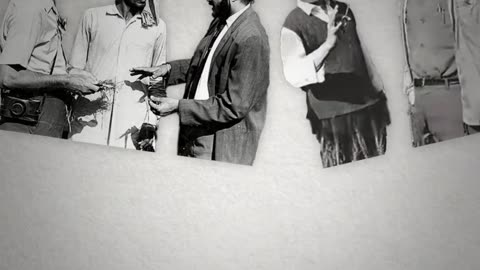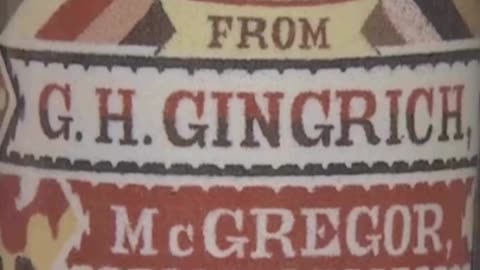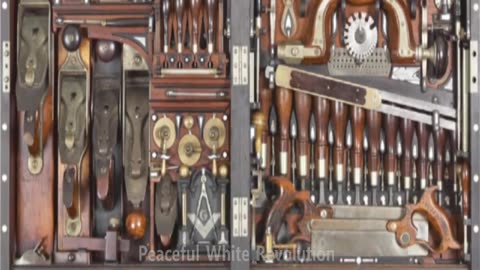
Great Whites
3 videos
Updated 24 days ago
A playlist showcasing great White thinkers and inventors
-
Great White Saint of the Harvest: Norman Borlaug, The Man Who Saved Over a Billion Lives
 Peaceful White RevolutionGreat White man Norman Borlaug may be the single most important man you’ve never heard of. Known as the Father of the Green Revolution, his agricultural innovations transformed food production worldwide. 🌾 By developing high-yield, disease-resistant crops, Borlaug is credited with saving over a billion lives from starvation and enabling billions more to exist who otherwise never would have been born. In this episode of Great Whites, discover how one man’s science and perseverance reshaped humanity’s future. ⚡ From famine to abundance, Borlaug’s legacy proves how innovation can change the world.65 views
Peaceful White RevolutionGreat White man Norman Borlaug may be the single most important man you’ve never heard of. Known as the Father of the Green Revolution, his agricultural innovations transformed food production worldwide. 🌾 By developing high-yield, disease-resistant crops, Borlaug is credited with saving over a billion lives from starvation and enabling billions more to exist who otherwise never would have been born. In this episode of Great Whites, discover how one man’s science and perseverance reshaped humanity’s future. ⚡ From famine to abundance, Borlaug’s legacy proves how innovation can change the world.65 views -
White artistic excellence: Andrew Clemens is one of the most mind-blowing talents you’ve never seen!
 Peaceful White RevolutionWhite artistic excellence: Andrew Clemens, a deaf artist from Iowa, may be one of the most mind-blowing talents you’ve never heard of! Andrew Clemens, a deaf artist from Iowa in the 1800s, created some of the most stunning sand art the world has ever seen—without modern tools or technology. Using nothing but natural colored sands and his unmatched skill, he crafted breathtaking designs inside glass bottles. His work remains a rare treasure of American folk art and a testament to human creativity and perseverance. Prepare to be amazed by a story you’ll never forget. #antiquesroadshow #sandart #andrewclemens #🤯 #folkart487 views
Peaceful White RevolutionWhite artistic excellence: Andrew Clemens, a deaf artist from Iowa, may be one of the most mind-blowing talents you’ve never heard of! Andrew Clemens, a deaf artist from Iowa in the 1800s, created some of the most stunning sand art the world has ever seen—without modern tools or technology. Using nothing but natural colored sands and his unmatched skill, he crafted breathtaking designs inside glass bottles. His work remains a rare treasure of American folk art and a testament to human creativity and perseverance. Prepare to be amazed by a story you’ll never forget. #antiquesroadshow #sandart #andrewclemens #🤯 #folkart487 views -
Great Whites: The Studley Toolbox is one of the most famous and intricate tool storage creations
 Peaceful White RevolutionBuilt by Henry O. Studley (1838–1925), a Massachusetts‑born mason, carpenter, and piano maker, it’s celebrated both for its ingenious engineering and its artistry. 🪚 Key Facts Dimensions: 20 × 40 inches closed, 40 × 40 inches open. Capacity: Holds about 300 tools in a perfectly fitted arrangement. Materials: Mahogany, rosewood, ebony, and mother‑of‑pearl inlays — reflecting Studley’s piano‑making craftsmanship. Weight: ~72 lbs empty, ~156 lbs fully loaded. Era: Built sometime between 1890 and 1920 while Studley worked as an organ and piano maker. ⚙ Ingenious Design Flip‑up trays, fold‑out layers, and hidden compartments — everything fits like a 3‑D jigsaw puzzle. Each tool has a precisely shaped slot and often “clicks” into place. Layout is both functional and decorative, with Gothic‑inspired details and meticulous joinery. Includes woodworking, machinist, and stonemasonry tools — some made by Studley himself. 📜 History & Legacy After Studley’s death in 1925, the chest passed to a friend, then to that friend’s grandson, Pete Hardwick. Loaned to the Smithsonian’s National Museum of American History in the late 1980s. Later sold to a private collector, but still occasionally displayed publicly. Became legendary in the woodworking community after appearing on the cover of Fine Woodworking magazine2. It’s not just a toolbox — it’s a functional work of art and a masterclass in space efficiency, craftsmanship, and design thinking.5 views
Peaceful White RevolutionBuilt by Henry O. Studley (1838–1925), a Massachusetts‑born mason, carpenter, and piano maker, it’s celebrated both for its ingenious engineering and its artistry. 🪚 Key Facts Dimensions: 20 × 40 inches closed, 40 × 40 inches open. Capacity: Holds about 300 tools in a perfectly fitted arrangement. Materials: Mahogany, rosewood, ebony, and mother‑of‑pearl inlays — reflecting Studley’s piano‑making craftsmanship. Weight: ~72 lbs empty, ~156 lbs fully loaded. Era: Built sometime between 1890 and 1920 while Studley worked as an organ and piano maker. ⚙ Ingenious Design Flip‑up trays, fold‑out layers, and hidden compartments — everything fits like a 3‑D jigsaw puzzle. Each tool has a precisely shaped slot and often “clicks” into place. Layout is both functional and decorative, with Gothic‑inspired details and meticulous joinery. Includes woodworking, machinist, and stonemasonry tools — some made by Studley himself. 📜 History & Legacy After Studley’s death in 1925, the chest passed to a friend, then to that friend’s grandson, Pete Hardwick. Loaned to the Smithsonian’s National Museum of American History in the late 1980s. Later sold to a private collector, but still occasionally displayed publicly. Became legendary in the woodworking community after appearing on the cover of Fine Woodworking magazine2. It’s not just a toolbox — it’s a functional work of art and a masterclass in space efficiency, craftsmanship, and design thinking.5 views

